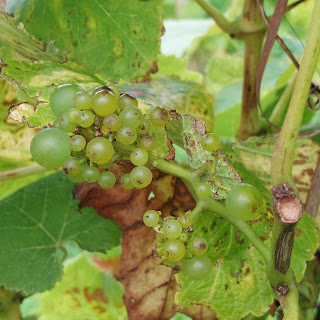It's interesting that multiple groups are studying various iterations of canopy management to reduce water consumption, reduce the effects of a warming climate, and maintain quality of the grapes. This scientific paper is going to take some studying to interpret, as these guys have really turned on the jargon.
Meanwhile, others have started analysing the results and have realising that something has to be done to mitigate the effects of climate change on the grapes have started experimenting. Trellis use to manage vine canopies has been implemented against the traditional means with interesting results in different places. In the San Joaquin Valley and some coastal regions, different canopy management approaches are being tested, with UC Davis at the forefront. They are not quite doing it overhead like we are. Instead, they are draping vines over a high wire at about 6 feet.
Most are using a vertical shoot position (VSP) system where they train the vines to grow straight up (or down or both) from the cordon, snipping the shoots at about 6 feet off the ground, creating a hedge-like structure. The grapes hang down from the cordon and yields are increasing. Very interesting.
 |
| VSP front |
 |
| VSP side |
There's even a Geneva double curtain system that I find a bit complex and daft, but they say is quite effective. Other trellis systems and pruning methods are described nicely here and here.

.png)























.png)




.png)
.png)

